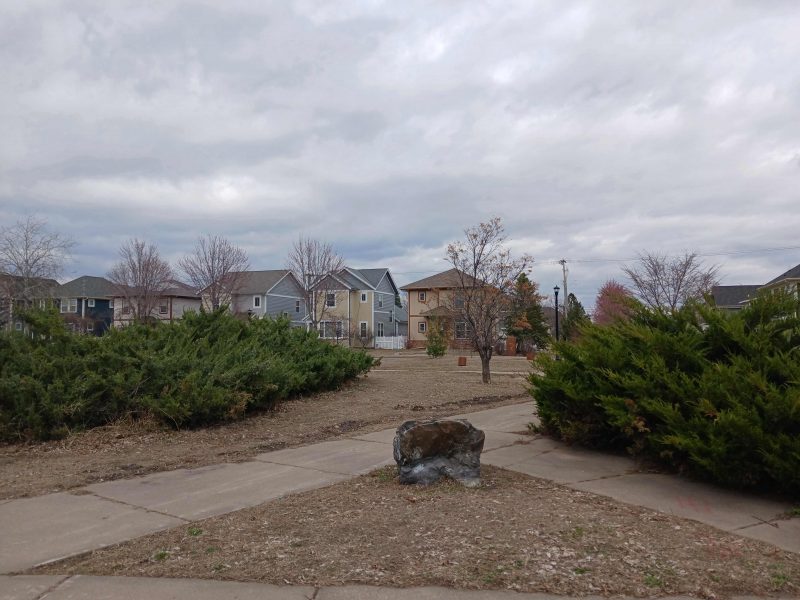
The migration of African Americans to the furthest point of North Minneapolis is memorialized on a Hidden Rock on Humboldt Avenue.
In 1885, Samuel Thorpe and his brother started their own company, Thorpe Brothers, Inc., which would grow into the largest real estate firm in Minneapolis. They owned much of the land from Southwest to Northern Minneapolis. In 1913 the company decided to sell the property it owned near the border of what is now Brooklyn Center to African Americans, many of them former slaves. The settlement was limited to three avenues. Each homesteader received a rifle upon staking their claim. Pilgrim Rest Missionary Baptist Church, one of two churches established by the migrants, remains on 5100 James Ave North; it was recently designated as a historic landmark of the City of Minneapolis.
It is noted that Thorpe Realty changed their stance on race; by 1927, they were building hundreds of houses and a golf course in Edina with many restrictions, called “redlining,” so homebuyers were strictly restricted to be occupants of the “white or Caucasian race.” All restrictions were to expire on or before January 1, 1964, except the one regarding race, which was to remain in force forever. (This was struck down later in courts.)
Today you will find a large grey rock with an attached plaque hidden amongst the bushes at 5000 Humboldt Avenue commemorating the African American pilgrims. The following is the “hidden history” written on this tablet across from Olson Middle School.
Maple Leaf and Humboldt Heights, “The Country”
Minneapolis was a city of over 300,000 in 1913 when a small African-American community began to grow north of Shingle Creek on Humboldt, James and Irving Avenues. Many of the first residents were families from Oklahoma, Missouri, Kansas and Texas. Some had Cherokee and Seminole Indian heritage. Among the first to arrive were Alex and Cora Adair and John and Emiline Bannan, from Oklahoma, and Wesley and Vealous Miller, from Kansas and Oklahoma. By 1920, there were about 20 families living in two small real estate additions known as Maple Leaf and Humboldt Heights.
The area’s rural feel at the edge of Minneapolis appealed to early residents who came from farms and small towns. Here, they worked as porters, teamsters and laborers. Many families had large vegetable gardens and raised chickens. Shingle Creek was a popular fishing and swimming spot for Cecil Adair and other neighborhood children.
Many families built their own houses. John and Emiline Bannan completed one of the first at 5058 Irving Ave. Construction of their one-room house, which was partly comprised of salvaged lumber, began in 1914, and the Bannans made many improvements over the years. Nearby houses built by the the Bannans’ neighbors included several arts and crafts bungalows.
Two mission churches established in the 1920s served Maple Leaf and Humboldt Heights: the Allen African Methodist Episcopal and the Humboldt Mission Baptist. The present Pilgrim Rest Missionary Baptist Church at 5100 James Avenue North, grew from the Humboldt Mission.
Today, Maple Leaf and Humboldt Heights are part of the Humboldt Greenery. Some still call this area “the Country,” a phrase that well evokes the landscape of the early community along Shingle Creek.
Hennepin County Works, 2003


